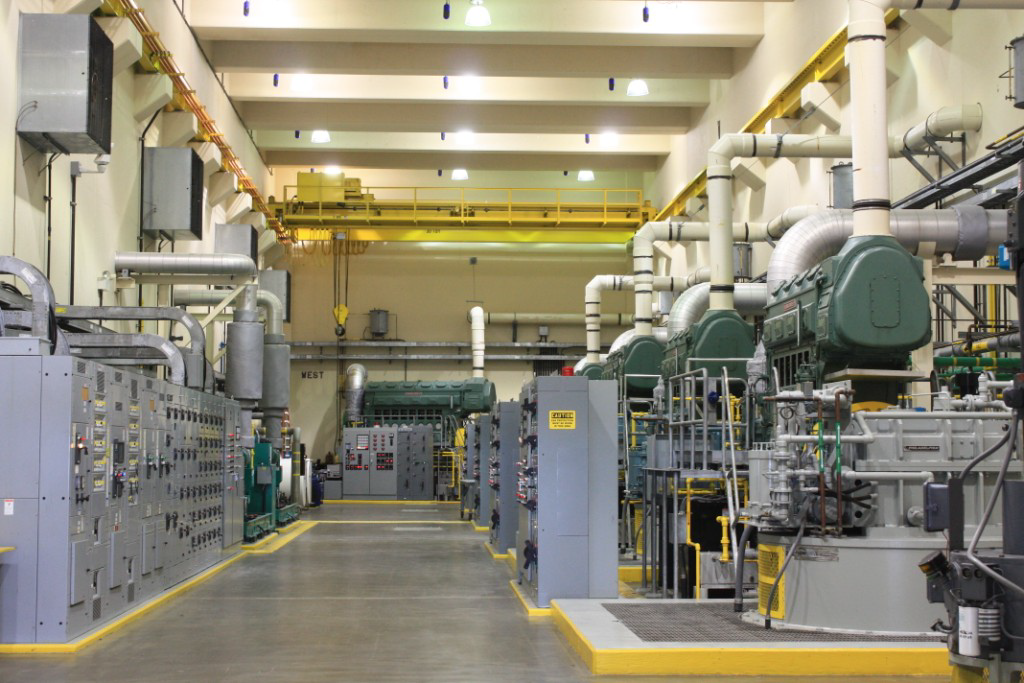9.1: Introduction
- Page ID
- 21159
Commissioning is a process of transforming a completed construction project into a functioning and useful infrastructure system. The construction project might be a completely new facility, a major new piece of equipment, a facility addition or major rehabilitation. The tendency of construction project managers is to focus on simply completing the construction process itself. Commissioning is intended to ensure that the new construction operates as planned and that the new facility can continue to operate with regular infrastructure management. So commissioning is important although likely infrequent activity for infrastructure managers.
New facilities can be quite complex, with a variety of systems needed to be commissioned. Electronics, mechanical equipment, software controls, and even components such as windows need to be tested and operation plans for asset management developed. An example of a complicated machine room is shown in Figure 9.1.1.

For larger projects, a specialized manager for the commissioning process may be retained. This manager would be responsible for insuring that all the major commissioning tasks are completed adequately. A challenging aspect of the commissioning agent’s job is that the construction organization(s), the infrastructure manager, the facility users and the facility owner must all be satisfied and involved.
Major steps in the commissioning process include:
- Preparation and planning involves identifying tasks, individual responsibilities and required documentation.
- Completion and integrity testing involves a comparison of as-built and as designed plans, often using computer-aided design or facility information models.
- Operational testing involves preliminary testing of equipment and software as built in the facility. This initial testing may rely upon construction or equipment supplier professionals, but should also involve the future operators of the equipment.
- Start-up and Initial Operation involves actual use of the facility with monitoring to ensure that the new facility is operating as planned.
- Performance testing occurs during use to assess the overall performance of systems such as heating, ventilating and air conditioning systems in new buildings.
- Post commissioning occurs when the regular infrastructure management procedures are in place and operating smoothly.
Of course, commissioning may not always go smoothly, and additional construction or adjustment tasks might be required in addition to the steps outlined above.


